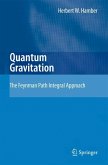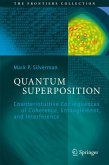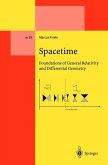Theoretical physics is presently at a very exciting time in the history of scientific discovery. For we are at a precipice facing two conflicting 20th century revolutionary movements in physics, each purporting to be basic truths of nature - the quantum theory and the theory of relativity. In the 20th century the mathematical expression of the quantum theory yielded correct predictions of a great deal of the data on the behavior of the molecular, atomic, nuelear and elementary partiele domains of matter. In the same period, the theory of relativity suc cessfully described new features of material systems. In special rela tivity, the relativistic Doppler effects (transverse and longitudinal) of electromagnetic radiation, and the mechanics of matter that moves at speeds elose to the speed of light, revealing, for example, the en 2 ergy mass relation, E = mc , revolutionized our thinking. In its form of general relativity, it has yielded a formalism that successfully pre dicted features of the phenomenon of gravity, also predicted by the elassical Newtonian theory, but in addition, features not predicted by the elassical theory, thereby superceding Newton's theory of universal gravitation. The problem we are now faced with, in these early decades of the 21st century, is that in their precise mathematical forms and their conceptual bases, the theory of relativity and the quantum theory are both logically and mathematically incompatible.
Hinweis: Dieser Artikel kann nur an eine deutsche Lieferadresse ausgeliefert werden.
Hinweis: Dieser Artikel kann nur an eine deutsche Lieferadresse ausgeliefert werden.
From the reviews: "This book differs from the many other books on the same topics in three essential points: 1st, it concentrates on the historical development of the question of the unification of quantum theory and gravity, 2nd, it uses the quaternion approach to describe the metric and other geometric objects, and 3rd, it is a quite personal book. ... a very readable monograph, containing also philosophical issues, considerations about electromagnetism, and unified field theory." (Hans-Jürgen Schmidt, Zentralblatt MATH, Vol. 1052, 2005) "The basic attempt of this book is to initiate a study of a single, coherent theory of matter applicable to all domains, from elementary particle physics to cosmology. ... This very interesting and clearly written book is even readable by a final year's student in physics. The presentation is very well got-up. ... I highly recommend this excellent work to every theoretical physicist interested in general relativity and unified field theories." (Fernand Dhoore, Physicalia, Vol. 57 (3), 2005) "Sachs' book is a fascinating exposition of how an approximation in general relativity brings out quantum mechanical features. Perhaps Einstein would have been greatly interested. ... I think it should be read by anyone who is interested in quantum mechanics and gravity." (J. Hartley, Contemporary Physics, Vol. 45 (6), 2004)









